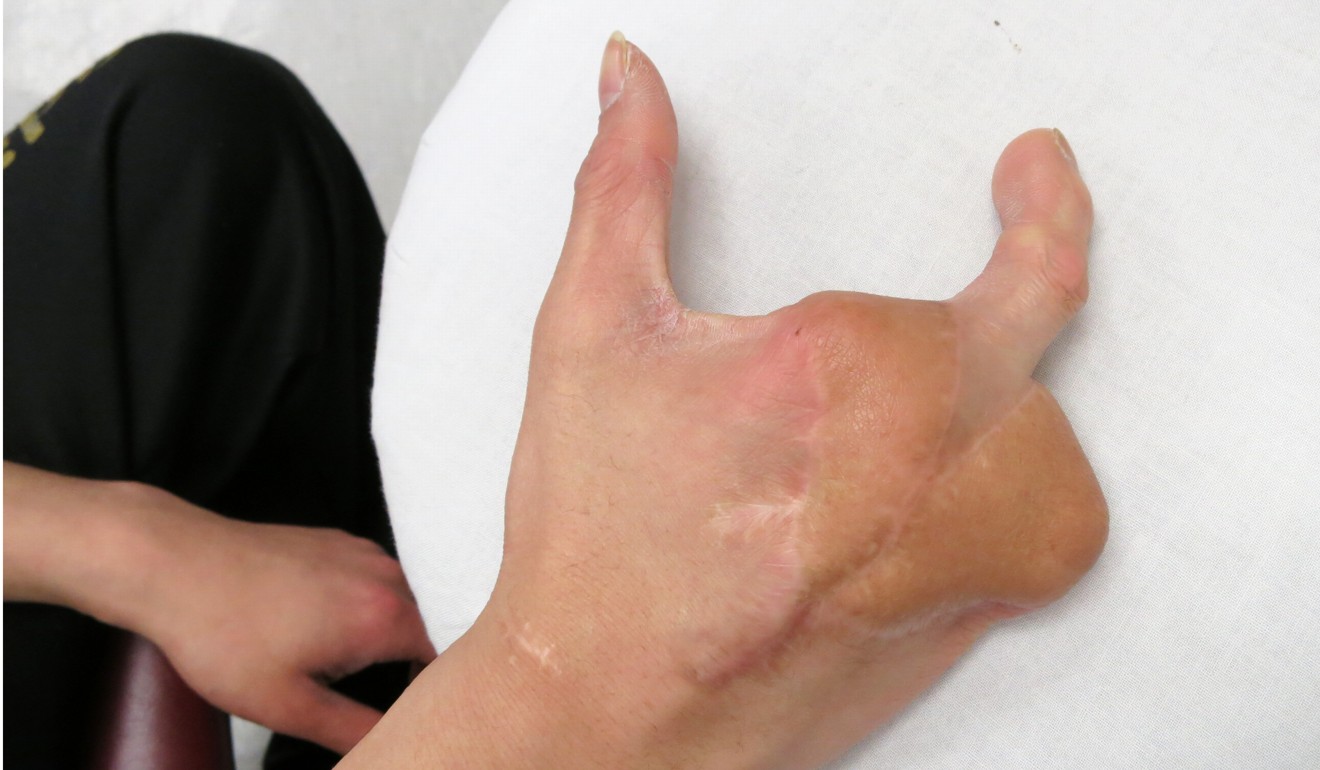
Meet Hong Kong’s replantation specialists, who have given hope to hundreds of patients with severed limbs
Team of surgeons, nurses, occupational therapists and physiotherapists gave a young man who had lost most of his hand a new lease of life by attaching one of his toes onto his damaged limb
Thirteen years ago, a 19-year-old Hong Kong man whose right hand was crushed by a machine making fishballs was rushed to a local hospital.
It was the man’s first day at his factory job and he had ended up losing four fingers, orthopaedic surgeon Dr Ho Pak-cheong recalled.
“He was only 19 years old and left with a thumb … no matter what [we] needed to figure out a way to help him,” he said.
Paramedics who helped the man were able to salvage the severed fingers and Dr Ho and his team managed to reattach them – through a surgical process called replantation.
But they quickly found that the severed fingers were already infected with bacteria from the fresh fish used in the fishball machine. They had to undo the procedure and instead chose to take the patient’s second toe from his left foot and transplant it to his right hand, in between where his index and middle finger once were.

Three years later, after physiotherapy and practice, the young man was able to use his right hand and lift a table slightly off its legs and hold on to small objects with his thumb and new finger.
“Replantation not only restores the integrity of a human being’s body, but it also brings new meaning to the life of the patient,” said the chief of service of the Department of Orthopaedics and Traumatology at Prince of Wales Hospital and Alice Ho Miu Ling Nethersole Hospital.
Ho and 15 other colleagues from both hospitals and North District Hospital are part of the New Territories East Cluster Replantation team, established in 2002.

The team comprises surgeons, nurses, occupational therapists and physiotherapists and together, they have treated 233 patients in the last 16 years – or slightly more than one-third of the 629 replantation cases seen in Hong Kong’s public hospitals.
Ho became interested in orthopaedic surgery in 1988 and began practising it a year later. He recalled another case in October 1999 when a technician surnamed Chan had his right hand torn off at the wrist when it became stuck in between a steel wire rope and the gearwheel of a lift.
Delay in mosquito monitoring system needs to be fixed, says Hong Kong microbiologist as he calls city’s dengue fever infection rate ‘a bit intimidating’
A local media report of the incident said Chan was working in the engine room of a building rooftop when the incident happened. Holding on to his amputated hand, he took the lift down to the ground floor to seek help.
“He was brave and extraordinarily calm … and he was determined to get his hand back as his wife was pregnant then and he wanted to take care of his child,” Ho said
“This strong will allowed the patient to recover during the entire process.”
But the team has not always had successes – about 26 per cent of cases, about 60 patients, have been classified as unsuccessful.
In one case, a patient’s arm was partially sliced off at the elbow and when it was reconnected, toxins from the amputated part were pumped back into the heart.

“For one to two minutes [the patient’s] blood pressure was not high enough, and the next minute [the patient’s] heart stopped [beating] … I had to cut everything to save his life,” he said.
New Territories East Cluster Replantation Team has been given the Hospital Authority’s “2018 Outstanding Team” award. Ho praised his team members as performing successful surgeries was a team effort, he said, and surgeons in the cluster tended to work in pairs.
Four ways to keep medical expenses down, on the doctor’s advice
With Hong Kong moving away from its dependence on manufacturing to focus on services and trade, the rate of industrial hand injuries has also fallen.
In 1980, 42 per cent of the workforce was in manufacturing and in the early 2000s this had decreased to 7 per cent. However, work and worksite injuries still do take place and between 2012 and 2016, 53 per cent of these were caused by machines and electric saws. Of the 68 cases the cluster treated within that period, about half were patients whose injuries involved complete amputation of digits or limbs.

